Thanks, Tara, for inviting New Books for Kids back to your blog. We were here last year at the start of our debut journey together talking about what else?—debut groups!
For this visit, Tara asked us to consider how we approach the craft of writing. From inspiration to polished manuscript, what is our process? You wondered, “Do we start with a theme when we write? A character? A structure? How do we revise?” Here are some answers from New Books for Kids.
 Adria Karlsson (MY SISTER DAISY, illustrated by Linus Curci):
Adria Karlsson (MY SISTER DAISY, illustrated by Linus Curci):
Almost always my books start out as ideas jotted down in a notebook, on a sticky note, or in my phone. I love novel information and when I hear something that makes me go, “Wait. What?!” – that’s usually a good indication I’m going to have to investigate further. Sometimes the ideas come from within my own thoughts when I’m tackling a problem of my own, helping a kiddo get through a tough moment, or celebrating someone’s accomplishment. It’s a long way from there to a proper story and sometimes I never do figure out how to move it out of “concept” and into “story.” Despite that, I like my collection of dysfunctional ideas and come back to them often to see if any of them have germinated. The evolution into a story often occurs when I figure out the theme that will carry the concept.
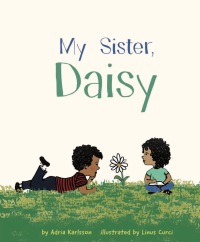
About Adria: Once upon a time, Adria Karlsson could have been found teaching people, training cats and dogs, or tutoring dyslexic kids, but now they spend their time writing and parenting. They set off on a new adventure every day to discover fresh alchemies of words and ideas that will build a good story. Visit her online at adriakarlsson.com or on Twitter: @adriakarlsson.
 Alex Katona (DINNER ON DOMINGOS, illustrated by Claudia Navarro):
Alex Katona (DINNER ON DOMINGOS, illustrated by Claudia Navarro):
When I have an idea, I just start writing. I don’t think too much about an arc, but I try to have a theme in mind. My first draft is MESSY—I try not to be too critical and just get my ideas down. After the initial thoughts are on paper, I leave it for a few days to figure out where to go next. When I come back to it, I break it apart and dissect it. I think about character development and pacing and page turns, but I continue to think about the theme. I even write the word or phrase on a post-it note and stick it near my laptop so I’m constantly reminded of it.
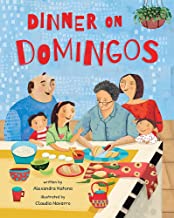
About Alex: Alex has been writing stories since she was young. When she’s not writing, you can find her surfing, exploring the outdoors, or reading. She lives with her husband, son, and dogs in Southern California and believes in the connective power of food. Dinner on Domingos is based on her own childhood. You can visit her at alexandrakatona.com or on Twitter @Alex_KatonaC.
 Benjamin Giroux (I AM ODD I AM NEW, illustrated by Roz MacLean):
Benjamin Giroux (I AM ODD I AM NEW, illustrated by Roz MacLean):
Our youngest member finds inspiration for writing from his everyday life. He wrote the poem that became his debut book I AM ODD I AM NEW as a school assignment in which he expressed his experience living as a person with autism in a neurotypical world. The book series he’s currently working on also channels his everyday moments and was inspired by Monty, his pet snake. What in your own life inspires you?
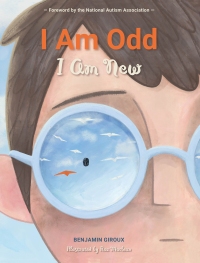
About Benjamin: Benjamin, whose book was given the prestigious Kirkus Reviews Star, has been featured on many websites, in the Huffington Post, and on the Today Show and Good Morning America. He was named Poet Laureate of Plattsburgh, New York, and has also been the face of the National Autism Association’s antibullying campaign. His poem has been translated into several languages. He is now an award-winning songwriter. Visit him at benjamingiroux.com.
 Katie Williams (POET, PILGRIM, REBEL: The Story of Anne Bradstreet, America’s First Poet, illustrated by Tania Rex):
Katie Williams (POET, PILGRIM, REBEL: The Story of Anne Bradstreet, America’s First Poet, illustrated by Tania Rex):
While the ‘craft’ of writing involves many different phases and elements, I think my favorite one is the brainstorming phase. To me, this is one of the most important parts since it determines the subject of your story. Setting, POV, main character, those all come later, but first you need your subject. There are so many ways to brainstorm ideas and none of them are wrong. Some people enjoy perusing the news looking for interesting people or events. Others might sit and meditate, seeing what comes to them naturally. For me, I love to look around and attempt to see the world with new eyes. How would my children see that clump of trees? As a hideout? A scary forest? A home to an animal? With nonfiction, it can mean looking at a historical figure with a fresh take on it. Sure, that person grew up to be famous, but what were they like as a child? What were their dreams/hopes/fears? When you look at the world in a fresh, new way, you’ll literally find story ideas everywhere!
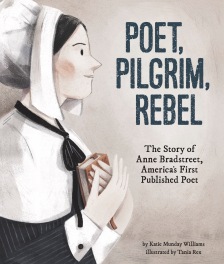
About Katie: Katie is a Public Health Nurse, Lactation Consultant, and Author. She has always been an avid reader and was once so engrossed in reading Black Beauty that she missed her school bus home. She lives in Santa Cruz, CA with her husband and two children, where they enjoy digging for sand crabs and attempting to bring the entire beach home with them in their pants. Visit her online at katiemundaywilliams.com or on Twitter: @KatieWills79.
 Leah Rose Kessler (RAT FAIR, illustrated by Cleonique Hilsaca):
Leah Rose Kessler (RAT FAIR, illustrated by Cleonique Hilsaca):
What happens when you’ve tried everything, and your story still doesn’t feel right? As counterintuitive as it sounds, my craft tip for you is to let it go. Sometimes the best thing you can do for your manuscript is set it aside. Even if it’s the story of your heart, the one you’re certain you’re destined to publish, stop working on it. Drop it like a handful of lava. Put it out of your mind.
Create a folder labeled “To Come Back To Later” and plop it in. Then walk away. Have a piece of toast. Repaint your bathroom. Learn how to ski. After enough time has passed (I’m talking months, not days), one of two things is likely to happen. Either you’ll find that you’re immersed in another manuscript and don’t feel the need to visit that folder, or you’ll go back and take a peek and realize your brain has been working on it in the background all along; all the mentor texts you’ve read, the movies you’ve watched, the life you’ve lived, will have added up into a big swirl of insight and inspiration while you weren’t even looking. You’ll be able to take your story forward in a direction you never would have been capable of if you’d kept on picking and poking at it all those months ago.
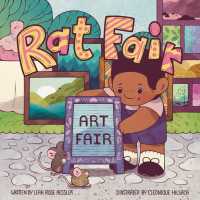
About Leah: Leah spent much of her childhood up a tree with a stack of books. These days, when she’s not reading or writing, she’s an on-again, off-again elementary school teacher and a lifelong biologist. She lives in Michigan with two humans and two cats and has a soft spot for scurrying creatures of all shapes and sizes. Her work has appeared in Cricket Media’s Babybug and Spider magazines. Leah is represented by Natascha Morris at The Tobias Literary Agency. Visit her online at leahrosekessler.com or on Twitter: @leahrosekessler.
 Morissa Rubin (DOT, DOT, POLKA DOT, forthcoming from POW! Kids Books):
Morissa Rubin (DOT, DOT, POLKA DOT, forthcoming from POW! Kids Books):
As an author/illustrator my creative process is messy, intertwined, and not at all linear. Sometimes I start with words and other times it is an image or visual idea that gets me started. I am very interested in the interplay of word and image, and I usually work in one realm for a bit and then switch to the other to see if I can let both sides develop together. I want to make sure that both sides of the equation (words and art) speak to me equally, each offering a different window into the work that is emerging. As a graphic designer and long-time publication designer, I think a lot about how a concept is reflected in its visual structure. How is the sequencing, pacing, and “chunking out” of the work reflected in both the words and phrasing, and how can it also be expressed with color, texture, pattern, and composition. But at some point, I do separate passes, focusing on just the words and language one time and then doing a visual edit at another time. I keep inching along, back and forth, back and forth.
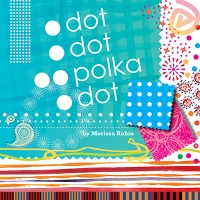
About Morissa: Morissa is a graphic designer who thinks polka dots, paisleys and plaid are better together. She received her BFA from RISD and her MS from MIT’s Visible Language Workshop. Morissa lives in Sacramento where she teaches typography and other design courses at UC Davis and Sac State. Visit her website at morissarubindesign.com/books or on Twitter: @MorissaRubin and Instagram: @morissa.s.childrensbooks.
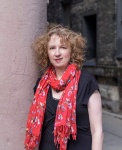 Rochelle Melander (MIGHTIER THAN THE SWORD: Rebels, Reformers, and Revolutionaries Who Changed the World through Writing, illustrated by Melina Ontiveros):
Rochelle Melander (MIGHTIER THAN THE SWORD: Rebels, Reformers, and Revolutionaries Who Changed the World through Writing, illustrated by Melina Ontiveros):
The idea for MIGHTIER THAN THE SWORD came from teaching writing to young people. I wanted to create a resource that would tell the stories of people who wrote to share big ideas, fight for equal rights, and heal the environment. When I researched and wrote each chapter, I started with the question: How did they use writing to change themselves and the world? These hooks guided my writing—and I used them to tell the story. When I revised, I read my words aloud, listening for juicy words and interesting twists and turns that would hook the readers. This process works well for writing and revising picture books, too. I start with the theme or question, using that to research, brainstorm, or write the story. When I revise, I listen with the imagination of a child. How will this story unfold for them? What words will appeal to them? Where will they get hooked? And where will they get lost? That helps me to find my way forward.
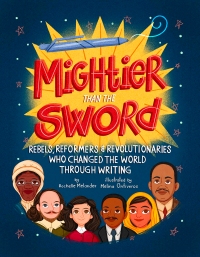
About Rochelle: Rochelle wrote her first book at seven and has published 11 books for adults. Mightier Than the Sword won the 2021 Cybils Award for Middle Grade nonfiction. She’s an ADHD coach, an artist educator, and the founder of Dream Keepers, a writing workshop for young people. She blogs at writenowcoach.com and rochellemelander.com. Find her on Twitter and Instagram: @writenowcoach.
 Stephanie Wildman (BRAVE IN THE WATER, illustrated by Jenni Feidler-Aguilar and translated into Spanish as VALIENTE EN EL AGUA by Cecilia Populus-Eudave):
Stephanie Wildman (BRAVE IN THE WATER, illustrated by Jenni Feidler-Aguilar and translated into Spanish as VALIENTE EN EL AGUA by Cecilia Populus-Eudave):
Like several of my colleagues, I also find inspiration in the day to day. My forthcoming picture book Treasure Hunt combines two activities I do with my grandchildren. But how does one go from inspiration to polish? My most important craft tip (as a non-illustrator) is putting the manuscript (after rewrites and those ever so valuable critiques) into a picture book dummy format. That allows me to focus on page turns – will the reader want to turn to the next page? What can be pictured with this text? Are too many pages taking place in the same scene? I can better answer these questions once the manuscript is formatted like a book. And of course, read it out loud.
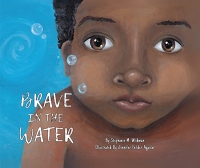
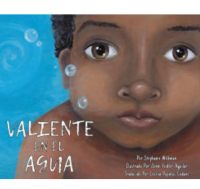
About Stephanie: Stephanie became a Professor Emerita after serving as the John A. and Elizabeth H. Sutro Chair at Santa Clara Law. In that role she authored books, law review articles, and journalistic pieces. She is a grandmother, mother, spouse, friend, good listener, and she can sit “criss-cross apple sauce” thanks to her yoga practice. Lawley Publishing will release her second children’s book Treasure Hunt (illustrated by Estefania Razo) in November 2022. Find her at stephaniewildman.com or on Twitter: @SWildmanSF.
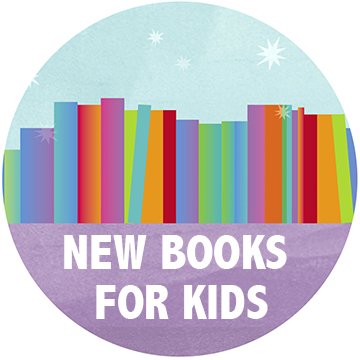
Thank you for sharing your craft tips, authors!
Blog readers, do you have a craft or process tip that works especially well for you? Please share in the comments!
Source : The Craft of Writing for Children with NewBooksforKids.com














